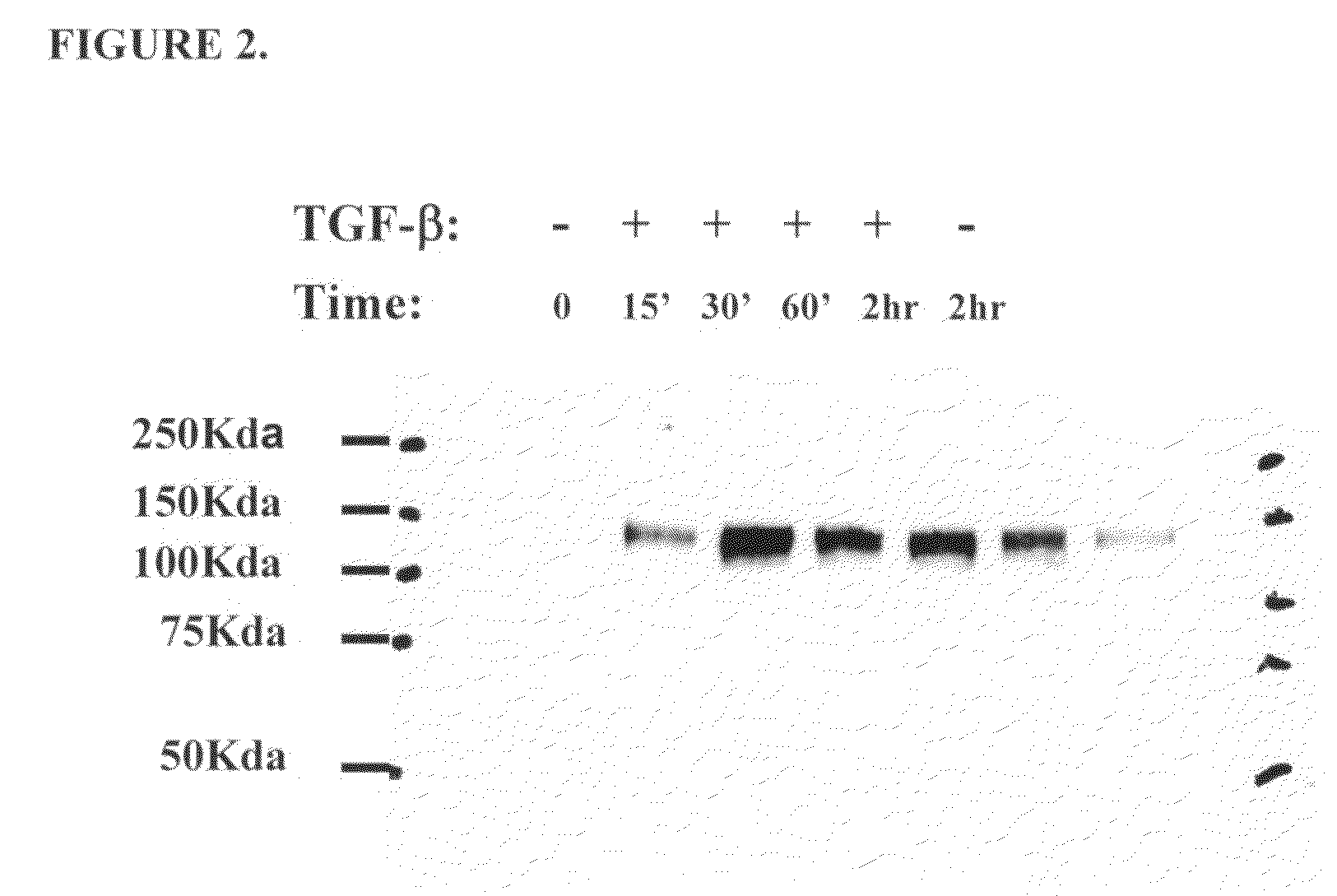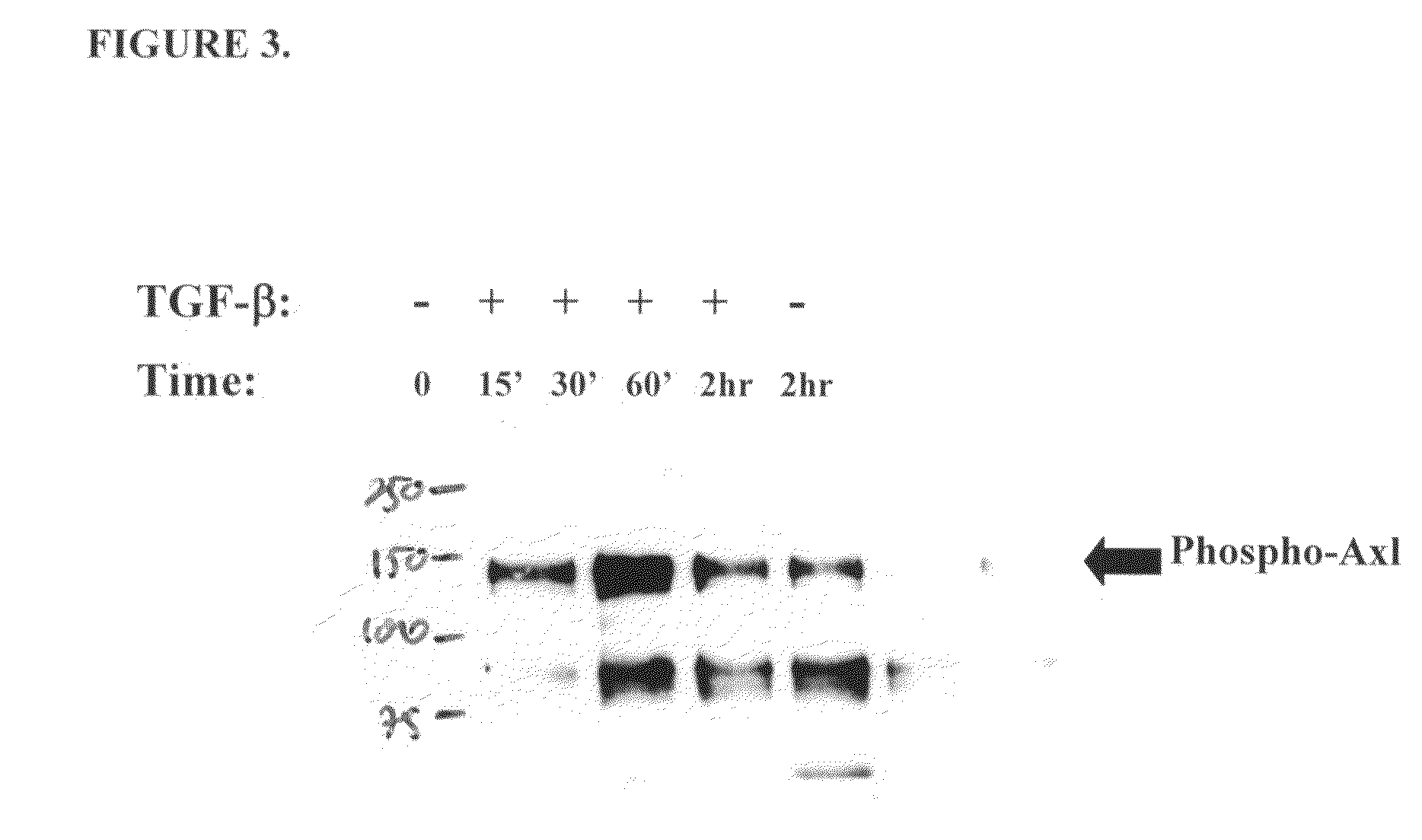Methods of treatment of renal disease
a technology of kidney disease and treatment method, which is applied in the field of identification and isolation of polynucleotide sequences, can solve the problems of severe shortage of donors, expensive treatment, and far from optimal,
- Summary
- Abstract
- Description
- Claims
- Application Information
AI Technical Summary
Benefits of technology
Problems solved by technology
Method used
Image
Examples
example 1
Identification of Ax1 Overexpression by Microarray Hybridization Study
[0154]In accordance with the present invention, the microarray hybridization approach was utilized in order to discover genes that are differentially regulated in diabetic nephropathy and kidney fibrosis.
[0155]Microarray-based analysis of gene expression was based on the analysis of human fibroblasts subject to selected stimuli resulting in changes in extracellular collagen accumulation and proliferation—the hallmarks of fibrosis. According to the present invention, a specific “Fibrosis” DNA chip was first prepared followed by a microarray hybridization experiments with 19 different types of probes. Analysis of the results was carried out by proprietary algorithms, and analysis of the selected set of genes was performed by using bioinformatics and the scientific literature.
Preparation of Specific “Fibrosis” DNA Chip
[0156]A dedicated human “Fibrosis” DNA chip was prepared according to assignee's SDGI method (PCT Ap...
example 2
Validation of Ax1 as a TGF-β Induced Gene (Expression and Phosphorylation Status) by In Vitro Experiments
[0194]In order to verify the chip hybridization results, the response of endogenous Ax1 expression to TGF-β stimulation was monitored by Western blot analysis. Total cellular proteins from various cell lines, (of which Rat1 cell line was also stimulated by TGF-β (5 ng / ml for 24 hr) were extracted, and the expression of Ax1 was analyzed by Western blot analysis. Thirty (30) μg of total cellular lysate were run on an 8% SDS gel.
[0195]Results showed slight up-regulation following TGF-β stimulation in Rat1 cells (shown in FIG. 1).
[0196]Further experiments were done on Rat1 cells that were serum starved for 24 hr and then stimulated for the indicated time (15 min-2 hr) with 5 ng / ml TGF-β. Results show that indeed TGF-β induces Ax1 protein level (FIG. 2), following 15 min of TGF-β treatment. Increase in its phosphorylation is also observed (FIG. 3) suggesting than in response to TGF-β,...
example 3
Assessment of In Vivo Models for Kidney Fibrosis by Morphology, Immunostaining and In Situ Hybridization
Morphology
[0197]To assess general morphology, paraffin kidney sections were stained by hematoxilin-eosin (HE). The Sirius Red (SR) staining was used to reveal collagen in the sections.
[0198]Accumulation of interstitial myofibroblasts is regarded as an important initial step in the development of the renal fibrotic process. To reveal myofibroblasts, monoclonal antibody specific to α-smooth muscle actin (clone 1A4) was used for the peroxidase-antiperoxidase (PAP) immunostaining of kidney paraffin sections. The monoclonal antibody PC-10 was used for the immunostaining of proliferating cell nuclear antigen (PCNA). To achieve adequate PCNA immunostaining, de-paraffinized sections were subjected to antigen retrieval procedure before performing PAP staining.
[0199]35S-labeled riboprobes were synthesized and hybridized to kidney paraffin sections accordin...
PUM
| Property | Measurement | Unit |
|---|---|---|
| molecular weight | aaaaa | aaaaa |
| molecular weight | aaaaa | aaaaa |
| molecular weight | aaaaa | aaaaa |
Abstract
Description
Claims
Application Information
 Login to View More
Login to View More - R&D
- Intellectual Property
- Life Sciences
- Materials
- Tech Scout
- Unparalleled Data Quality
- Higher Quality Content
- 60% Fewer Hallucinations
Browse by: Latest US Patents, China's latest patents, Technical Efficacy Thesaurus, Application Domain, Technology Topic, Popular Technical Reports.
© 2025 PatSnap. All rights reserved.Legal|Privacy policy|Modern Slavery Act Transparency Statement|Sitemap|About US| Contact US: help@patsnap.com



